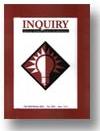Critical Thinking ApplicationWhile every human being and all creatures of the universe perform some sort of thought process on a daily basis not every thought is of a critical thinking nature. Basic thought processes are usually either emotion or logic based. Basic or simple thought is usually emotional based whereas critical thought can be considered more logic based. The purpose of this paper is to describe critical thinking, provide an example from my own personal experience in applying critical thinking to work related decision making, and to emphasize the importance and benefits of critical thinking in the decision-making process.
The most basic description of critical thinking would be a logical thought process that allows a person to distinguish between fact and opinion (Paul and Elder, 2006). Therefore, critical thinking could be considered a logical mental process that involves knowledge or research of specific subject matter presented to determine fact from opinion rather than taking information presented at face value and rolling with it.
For a person to be able to make logical decisions based on critical thinking he or she must acknowledge the need for crucial decisions, appropriately recognize alternatives, put the time into reasoning through decisions, and develop a knowledge of ignorance to discern between fact and opinion (Paul and Elder 2006). Basically, question everything.
However, critical thinking goes beyond actively questioning everything one sees and hears during the decision making process. Langdon, K. (2006) indicates several techniques to aid in the critical thinking process to include but not limited to:1.Active Listening: listening for meaning while assessing feelings, emotions and the logic in the message being received then providing feedback to confirm understanding.
2.Interpreting: internal thought process used to find understanding of the meaning of the information being presented.
3. Analysis: closer examination of the content of...



Very good
very well-organized and well-written.
usually we have to write a critical reflection about something, but nobody really takes the time to understand what critical thinking really is.
this was very useful to me, and I would read it before completing a critical assignment...
3 out of 3 people found this comment useful.